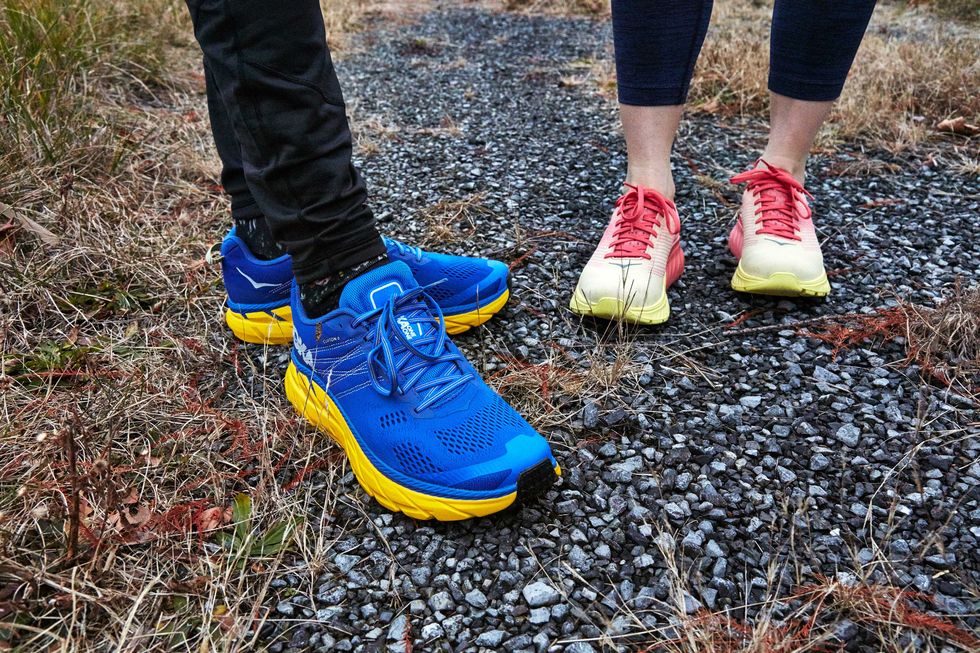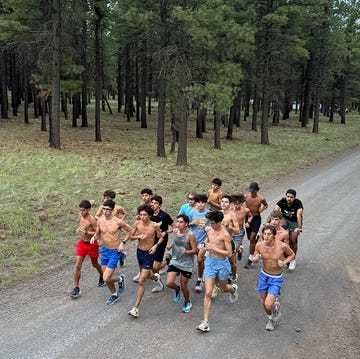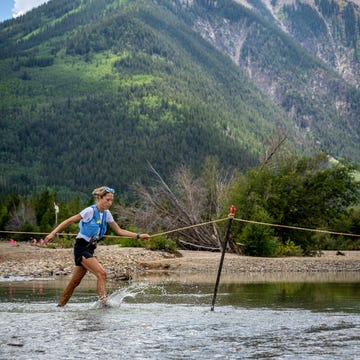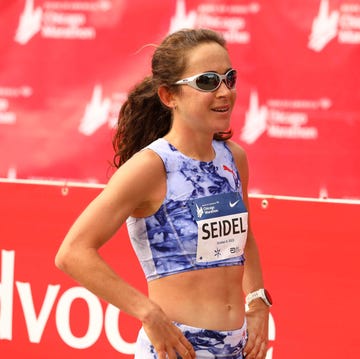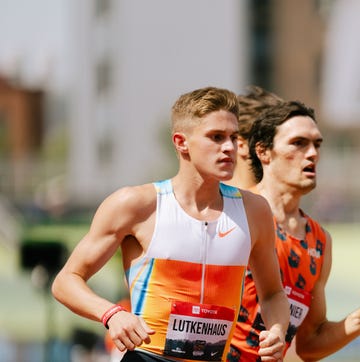It wasn’t too long ago that Hoka was a brand of footwear you’d only expect to see sported by, well, runners. In fact, I remember the distinct feeling of surprise I experienced in 2021 when writer and comedian Julia Shiplett tweeted, “Where my Hoka heads at?” and leagues of her followers affirmed their loyalty to the French-founded cushy sneaker brand.
I shouldn’t have been surprised. Running brands aren’t secret, and anyone can be a runner. That said, some things in the running community are somewhat niche; I don’t expect non-runner friends or dabblers to be fluent in lingo like “fartlek,” “Oiselle,” or “Full Send.”
In 2023, Hoka is anything but niche though. The maximalist cushioned trainers—designed to mimic a smooth ride on a mountain bike or powder skis, built to “cradle runners’ feet”—are so popular that a recent People headline informed that Harry Styles “Hit the Gym” in the “Running Shoe Brand Hollywood Moms Wear”—said moms being Jennifer Garner, Gwyneth Paltrow, and Reese Witherspoon.
Nowadays, Hoka’s running shoes are fashionable amongst both the running class and everyday folks. They’ve transcended their intended purpose. You’re as likely to see the ultra-cushioned, bulbous shoes gracing Brooklyn sidewalks as a fashion statement as you are to see them tearing up the trail. In The Atlantic this week, writer Amanda Mull (not a runner) unpacks how Millennials popularized bulky, super-cushioned shoes like Hoka’s flocculent footwear, and why that’s likely a good thing for the next generation’s feet. Mull recounts how she came around to the shoes following a pandemic-era diagnosis of plantar fasciitis, something many distance runners are all too familiar with. However, she explains that she landed in the podiatrist’s office not due to excessive pronation or a tight Achilles impeding her running, but rather, from years of wearing punishing footwear like teetering heels and flimsy ballet flats.
The shoes that helped fix her feet, Mull writes, cushioned, stabilized, and supportive, “used to be the province of suburban dads, sensible aunts, and grandparents.” But over the past decade, “ultra-comfy sneakers, cushy clogs, sandals with arch support, and all manner of quasi-orthopedic footwear haven’t just become more abundant than ever; they’ve also become cool. Like, for young people.”
By all accounts, “ugly-cool shoes” are in—no shade to Hoka or other popular running shoes that fit into this functional for runners x fashionable for streetwear enthusiasts category—and have been for a while. The style emerged in the mid-2010s as a response to the preceding decade of “skinny jeans, high heels, tight tailoring, and minimalist sneakers,” which Mull notes, was itself a rejoinder to the baggy, grunge, and lug sole-heavy aesthetic of the 1990s.
It’s pretty cool that a shoe brand already beloved for its function (and looks; it’s all in the eye of the beholder, sure, but Hoka shoes are not objectively homely) in the running world also belongs to the fashion crowd. Colin Ingram, Hoka’s vice president of global product, told Mull that over the past few years, comfort has become king, and that “has been the brand’s greatest advantage in winning over the people who prefer the sleek look: Just put well-cushioned, highly stable alternatives on their feet.”

Abby Carney is a writer and journalist in New York. A former D1 college runner and current amateur track athlete, she's written about culture and characters in running and outdoor sports for Runner's World, Like the Wind Magazine, The New York Times, and other outlets. She also writes about things that have nothing to do with running, and was previously the editor of a food magazine.

